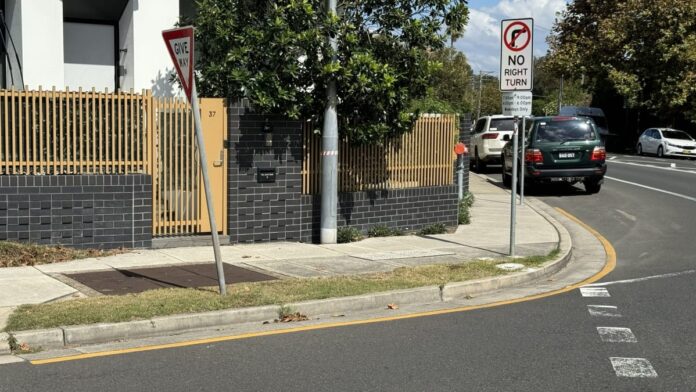[ad_1]
A Sydney council has been forced to offer a road rules refresher to residents unaware of the meaning of yellow lines painted on the road.

Motorists who are used to spotting a no-stopping sign and moving on have been caught out by a road rule that’s becoming increasingly common on Australian streets.
RELATED: How long should you stop at a stop sign?
Unbroken yellow lines painted on the side of the road next to the kerb serve the same purpose as no-stopping signs and are increasingly replacing signs in an effort to reduce visual clutter on crowded streets.
In April 2024, Bayside Council in South Sydney was forced to issue a reminder about this road rule, after noticing confusion from residents when the lines started popping up across the council area.
In an official statement, Bayside Council said: “Council is using unbroken yellow edge lines at intersections and on the side of roads to indicate ‘No Stopping’ zones. Painted yellow lines are more durable, easier to maintain, and have less impact on the visual appearance of an area than road signs.
“These unbroken yellow lines have the same rules as a ‘No Stopping’ sign and are enforceable with or without No Stopping signs being present.”

Every Australian state and territory uses yellow lines to mark a no-stopping zone regardless of the area except Western Australia, which only uses them to mark a bus embankment with a yellow line (still no stopping). This is covered under Rule 169 of the Australian Road Rules.
Parking on a yellow line will land you the same fine as parking in a no-stopping zone, and penalties vary depending on your location.
Fines for stopping on a yellow line
- New South Wales – $275 or more ($387 and 2 demerit points in a school zone)
- Queensland – up to $309
- Victoria – up to $192
- South Australia – up to $210
- Western Australia – up to $200
- Northern Territory – $80 or more
- Australian Capital Territory – up to 20 penalty units ($3200)
- Tasmania – up to $975
A few Bayside Council residents took to Facebook to point out the flaws of using a yellow line over a no-stopping sign, and some even claimed they’d never heard of the rule.
“It’s ok if you can see the line. I got booked a few years ago at Sutherland near the cemetery because the line was completely covered in leaves. I didn’t even see it,” wrote one user.
“I had no idea what the yellow line meant until I got booked. I [have] been driving for more than 50 years and never heard of ‘yellow lines’,” wrote another.
However, yellow line markings have been used since 1999 to notify users of ‘no stopping’ zones and were included in the NSW legislation in 2009.
What do yellow lines on the road mean?
Yellow lines aren’t just to signify ‘no stopping’ in Australia. In Victoria, a continuous yellow line in the middle of the road marks a part of the road where there is a tram track. Under road rule 155, you are not to cross this line.
Nationwide, some intersections have a yellow box with crossing lines to remind motorists that they cannot stop even if traffic flow is obstructed. However, the yellow box does not have to be present to receive a fine; it is a reminder.
This is covered under road rule 128: “A driver must not enter an intersection if the driver cannot drive through the intersection because the intersection, or a road beyond the intersection, is blocked.”
Also nationwide, an unbroken yellow next to a curb is used to signify that clearways are in place at certain times. However, clearway signs will state the times you cannot park there.
Regardless of any signs, if you spot a yellow line painted on the road in Australia, there’s a good chance a fine is involved.
The post ‘I had no idea’: The little-known parking rule costing motorists hundreds appeared first on Drive.
[ad_2]
Source link


